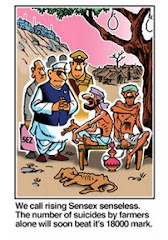
The subprime mortgage crisis is poised to get much worse.
Next year, interest rates are set to rise -- or "reset" -- on $362 billion worth of adjustable-rate subprime mortgages, according to data calculated by Bank of America Corp.
While many accounts portray resetting rates as the big factor behind the surge in home-loan defaults and foreclosures this year, that isn't quite the case. Many of the subprime mortgages that have driven up the default rate went bad in their first year or so, well before their interest rate had a chance to go higher. Some of these mortgages went to speculators who planned to flip their houses, others to borrowers who had stretched too far to make their payments, and still others had some element of fraud.
Now the real crest of the reset wave is coming, and that promises more pain for borrowers, lenders and Wall Street. Already, many subprime lenders, who focused on people with poor credit, have gone bust. Big banks and investors who made subprime loans or bought securities backed by them are reporting billions of dollars in losses.
The reset peak will likely add to political pressure to help borrowers who can't afford to pay the higher interest rates. The housing slowdown is emerging as an issue in both the presidential and congressional races for 2008, and the Bush administration is pushing lenders to loosen terms and keep people from losing their homes.
The number of borrowers facing higher payments isn't growing merely because the amount of loans with resets is higher. Another factor is that those with a looming reset now have a tougher time sidestepping it by refinancing or selling their home. "There is a large amount of borrowers who are in products that either no longer exist or that they no longer qualify for," says Banc of America Securities analyst Robert Lacoursiere.
Falling home prices mean that many borrowers have little or no equity in their home, making it tougher for them to get out from under their loans.











